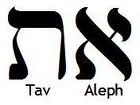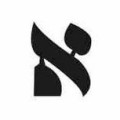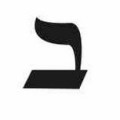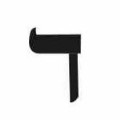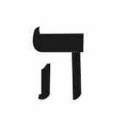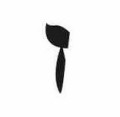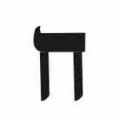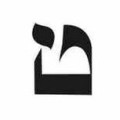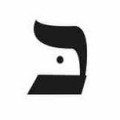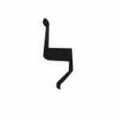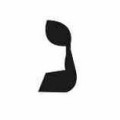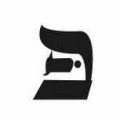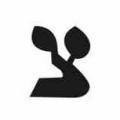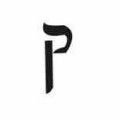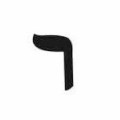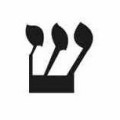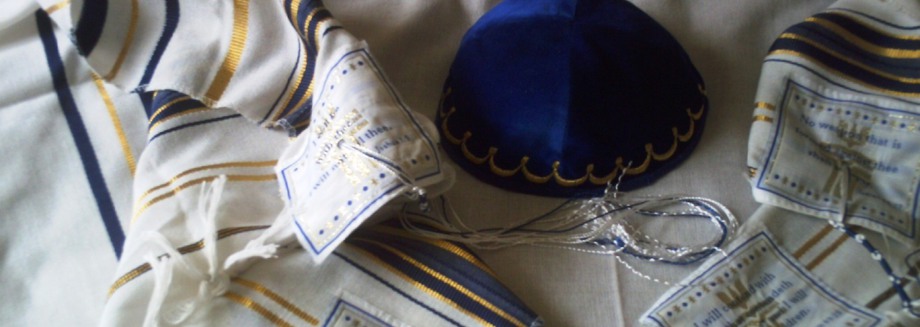
The Hebrew Aleph-Bet
Deeper Lessons from the Hebrew Alphabet
The Hebrew alphabet has two main historic script forms: the original old Hebrew script (the paleo-Hebrew) and the Aramaic script (upon which the present "square" form of the Hebrew alphabet is based). There is also a cursive script, which has varied over time but still exists as a common written form in Israel today.
The Hebrew alphabet has 22 letters, five of which use different forms at the end of a word (sofit), and is written from right to left. The Rabbis refer to Hebrew as "lashon ha kodesh" (the Holy tongue) and it is of no surprise that God has hidden away many remarkable details, if we are prepared to research and learn how to find them.
It is hoped that the following series of individual letter studies will help inspire you to further research and a new voyage of discovery of the Hebrew language and the Word of God itself.
Scroll down through the Aleph-Bet to see some interesting facts...
Aleph:
This letter traditionally represents the "sacrificial ox," "first," and "one thousand." It's the first letter of the Aleph-Bet, and is a symbol of God's Oneness and Omnipotence. Interestingly for Messianic believers, it is a three-in-one compound letter:
1) The upper right segment consists of a yod, the first letter in the Name of the God, YHVH; 2) A second yod in the lower left segment signifies the Creator living within and as a part of His creation; and 3) The central diagonal connecting pillar is the letter vav, a symbol of transformation.
Amazingly, aleph therefore perfectly represents the concept of the Divine YHVH being transformed / connected with His own Divine presence in and on Earth. For us, that is clearly the presence of God in human form: Yeshua, our Messiah and Teacher.
Bet:
The literal translation of this letter is "house". It’s also the first letter of the first word in the Tanakh – the Hebrew bible, namely Bereshit ("In the beginning" - Genesis).
Bet is said to symbolise the dual plurality of Creation, the “two worlds” of the Jewish faith, "This World" (the Olam Ha Ze) and the "World to Come" (the Olam Ha Ba). It certainly helps focus our minds on where our “house” or “home” really is – here, or in the Kingdom to come.
Hey:
"The Spirit of the Lord." It symbolizes Divinity and Gentility. This letter appears twice in the full Name of God and, together with yod, forms the Divine Name YAH.
According to tradition, the World to Come was created through utterance of the letter yod. This World was created through the sound of hey, which is pronounced as a mere exhalation of breath, requiring little movement from tongue or lip.
Vav:
Traditionally this symbolizes "Humanity" and the "Restoration of Judgment." As the third letter in the Ha Shem, the Holy Name, vav represents Completion, Redemption and Transformation. It is the letter of continuity, uniting Heaven with Earth.
When used with certain vowels (as in the probable pronunciation of the Name of God), vav can be an almost silent letter, more approximating a vowel than a consonant.
A soft, vowel-like vav denies the validity of the harsh-sounding Jehovah as an English translation for the Hebrew Name of God. As the letter yod is also a so-called half-vowel, Iyahovah, with the v and both h's uttered softly, may be closer to being correct as a possible pronunciation fo the Ineffable Name.
Yod:
Literally, "hand" and symbol of the Jew. It also means "monument" or "share." Although the smallest letter in the Hebrew alphabet, yod contains as much meaning as the rest of the Hebrew alphabet combined.
Yod signifies Creation itself and all of the Metaphysical processes and, on its own, stands as an important symbol for the Creator.
Kaph:
This translates directly as "palm (of the hand or tree)" and is the symbol of Crowning Accomplishment--with a dual meaning that encompasses both the beginning and the ending. Kaph also relates to the principle of the "four crowns": priesthood; kingship; the Toral, or Word of God; and a good name.
Mem:
Traditionally, mem has several direct meanings: "waters," "people," "nations," "languages," "tongues." It is the mystical symbol of the Revealed and of the Concealed.
Also the first letter in the names Moishe (Moses) and Mashiach ("Anointed One"), equated by some with a coming Messiah. Moses was given the revealed evidence of the Creator's sovereignty over His creation; the Messiah represents the concealed part of the Celestial rule to which Humanity submits in faith alone.
Nun:
Can be taken to mean "gaffing hook" (for fishing) and "to waste away." It is a letter sometimes used as substitute letter in order to disguise a name. In its mystical sense, nun represents Everlasting Faithfulness and the Emergence of the Soul. Just as the soul is a spark of the Divine, so is God's grace available to all.
Ayin:
This means "eye," "wellspring," "source," or "centre" and is linked with the Egyptian Eye of Horus. Ayin is, therefore, the symbol of Perception and Insight, of the Physical Eye and of the Spiritual Eye. It illustrates symbolically that the human eye can be taken as a microcosm of the universe.
Quf:
There are numerous traditional meanings for this letter, including: "to buy (or sell)"; "eye of the needle"; and "ape, or monkey." Esoterically, it is the sign for Holiness, both human and Divine, and a symbol for abstinence and control. Quf also represents the various Growth Cycles of our world.
Reysh:
Literally, "head," "chieftain," or "supreme one," paradoxically reysh can also be taken to mean "to become impoverished."
It stands for the Challenge of the Choice - Greeatness or Degradaton - between which elements there is a very fine dividing line. Reysh also represents the fact that the wicked retain the potential to repent at any chosen moment.
Tav:
Literally, this means "mark" or "sign," and it is also a symbol for "vehicle of sacrifice." Tav, as the final letter in the Hebrew alphabet, represents completion of the Spiritual Cycle and is a sign of Truth and Perfection. It denotes the final spiritual destination for humankind and is closely associated with the preceding letter shin.
Download Your Aleph-Bet Here
This is the alphabet commonly used in bibles and printed Modern Hebrew...
HebrewBlockAlephBet.jpg
JPG image [6.7 KB]
This is the alphabet commonly used in written Modern Hebrew...
Hebrew_Cursive_Lge.jpg
JPG image [36.5 KB]
Comments
-
Yeshua is the Aleph and the Tav, everything is held together in this. Shalom
-
Fascinating! Would love to learn more.

